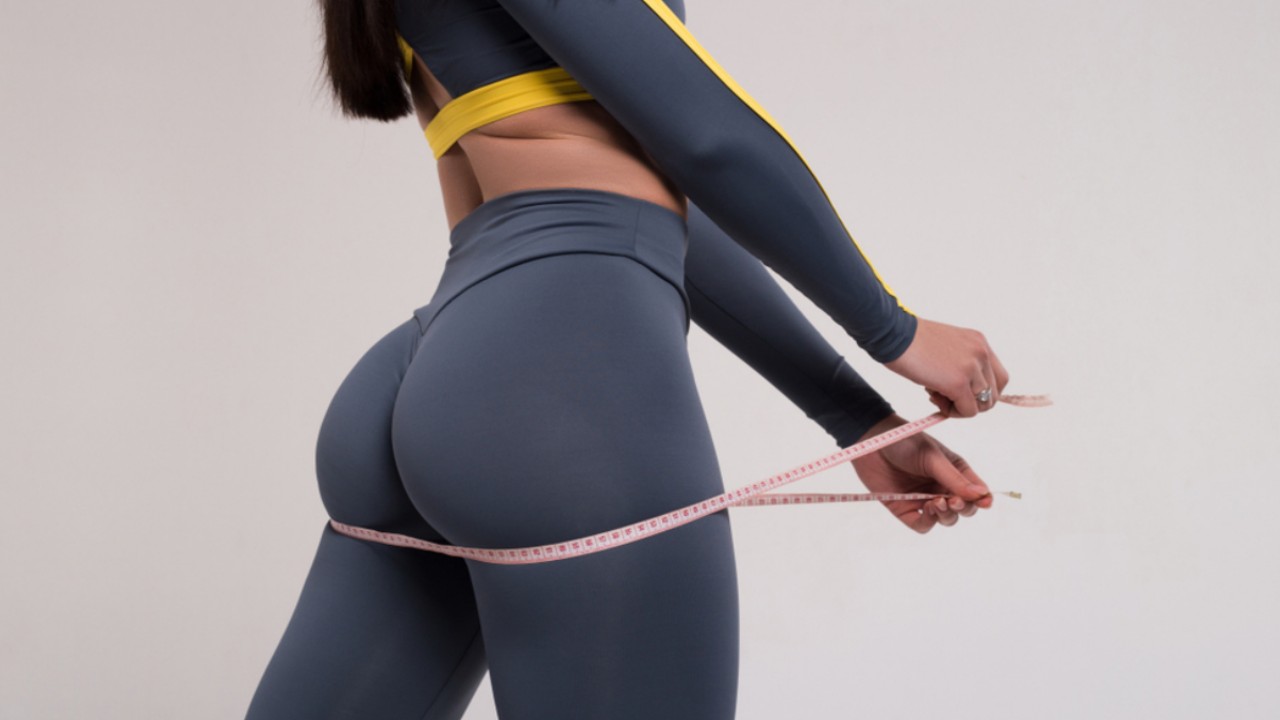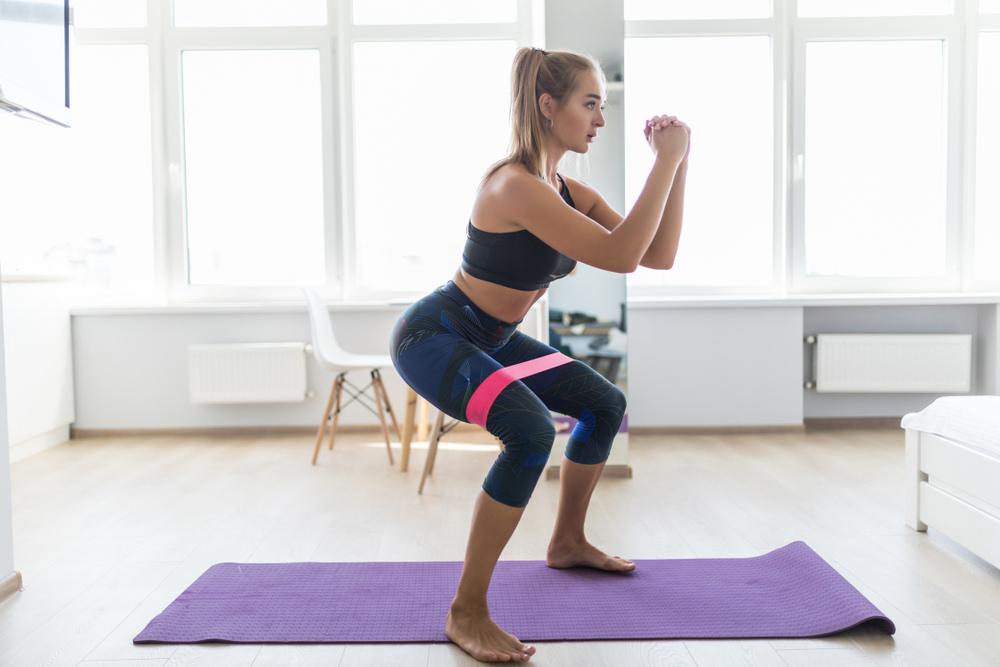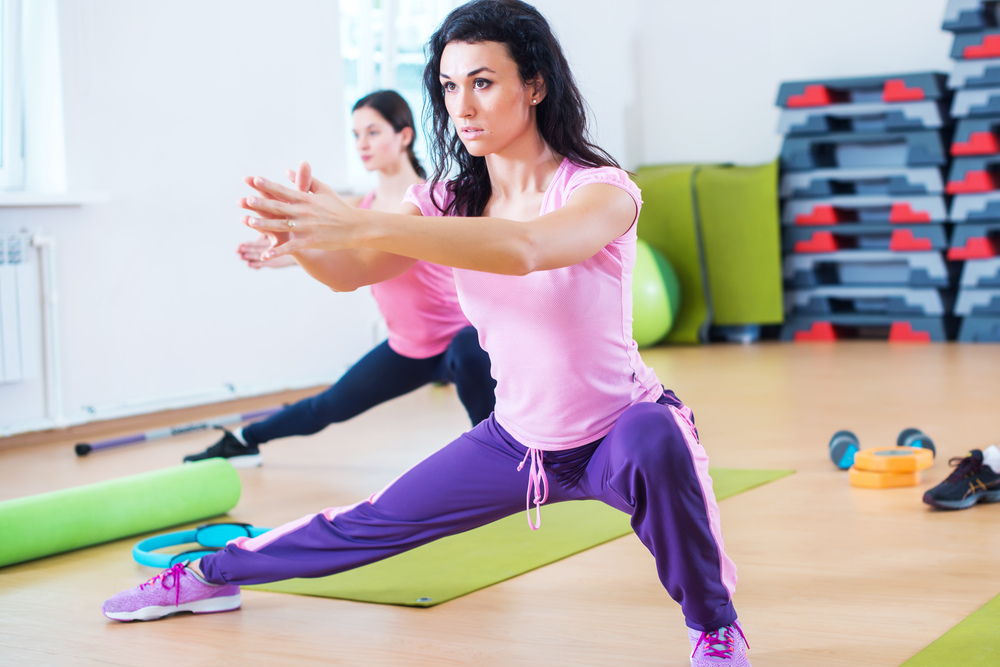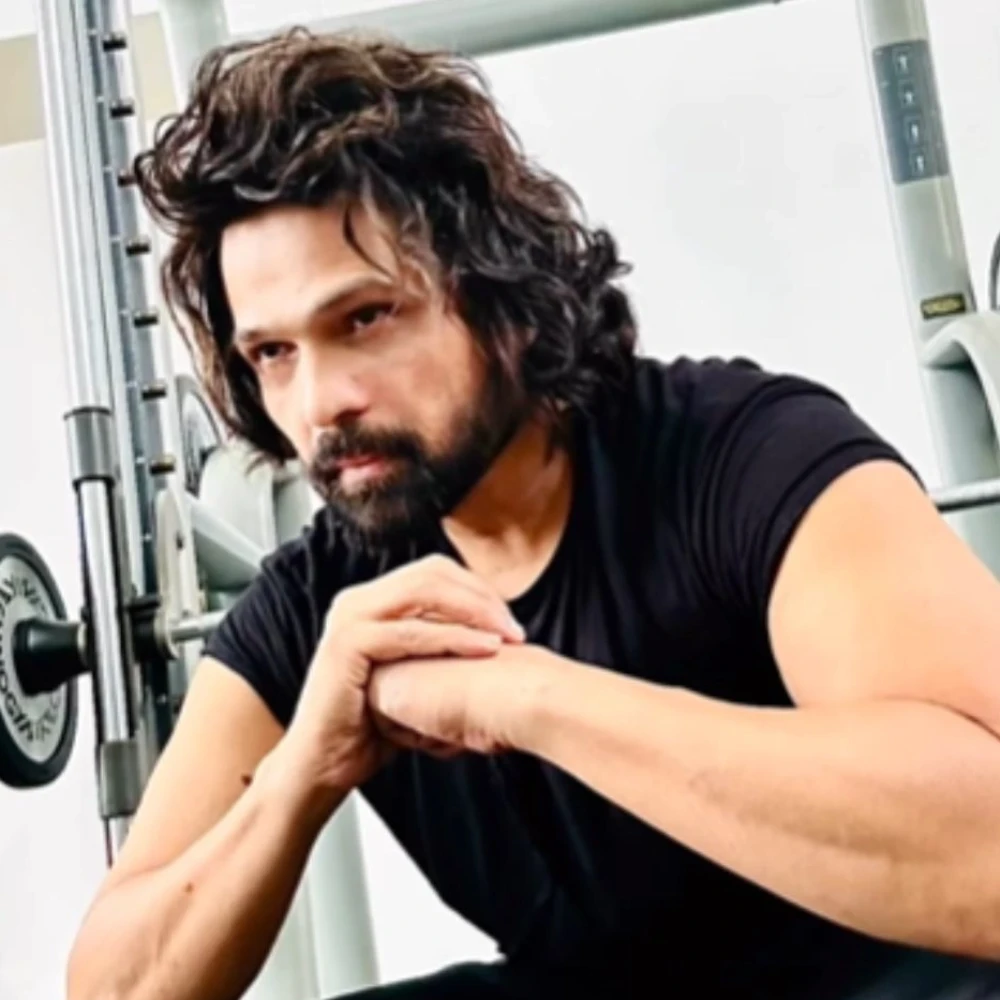Exercises For Wider Hips to Help You Unlock a Curvylicious Body
Strengthen, tone, and mobilize your hip muscles with this targeted set of exercises for wider hips, that will sculpt your natural curves along the way.

Embrace your curves, they tell a story of strength, femininity, and fertility – the power of creating life. The female body is naturally endowed with a wider pelvis bone structure (wider hip), which makes childbirth easier (1). While some women are naturally voluptuous, others tend to have a more slender body type, as genetics alone determines the bony structure of your hips. Gone are the days of a ‘size-zero’ figure; the world today appreciates the curvier ‘hourglass’ look. So the key to getting your haunches well-formed is to exercise for wider hips.
Whether you want to add more definition, desire muscle gains, create a more shaped silhouette, or simply feel more confident in your skin, we've got you covered. In this article, we'll explore a range of exercises and techniques that are specifically designed to target your hip muscles and promote the widening of your hips.
What Muscles To Target For The Look Of Wider Hips
If you have a slender or skinny body type with narrow hips, it's crucial to concentrate on building certain butt muscles to make the hips appear wider. The wider hips workout is a series of targeted exercises that help these muscles grow.
If you are flabby and curvy, toning these muscles with a bigger hips workout will help you lose fat, put on muscle mass, redefine your curves, and prevent love handles. You can attain more defined and attractive curves by concentrating on and developing these muscles with exercise for wider hips. Targeting the exact muscle groups that affect hip width and shape is crucial to broadening the hips.
The main muscles you ought to focus on in a butt workout are listed below:
Gluteus Medius and Minimus
These muscles are located on the sides of your hips and play an important role in hip width. You can make your hips appear wider by toning and strengthening your gluteus medius and minimus muscles. They can be effectively targeted with exercises like clamshells, side leg lifts, and lateral band walks (2).
Gluteus Maximus
Although your gluteus maximus is the largest muscle in your buttocks, it also helps to shape and widen your hips overall. Exercises that target and strengthen the gluteus maximus – include squats, lunges, and hip thrusts (2).
Tensor Fasciae Latae (TFL)
A small muscle called the TFL is situated on the outside of your hip. Exercises like side-lying leg lifts, lateral lunges, and hip abductions specifically target the TFL. It collaborates with the aforementioned three muscles to assist various hip movements. Additionally, its connection to the iliotibial (IT) band affects knee movements as well (3).
As you age, it is common to suffer from hip pain and immobility. Tenderness and stiffness resulting from joint deterioration, arthritis, or injury can have a negative impact on your mobility and overall quality of life (4). Nonetheless, exercise for wider hips has far more to offer than a curvy figure. Targeted hip exercises can play a pivotal role in reducing pain by strengthening, toning, and mobilizing the muscles. The strength and stability of your hips directly impact the health of your knees. Strong hips accompanied by cardio exercises are important for overall strength, proper knee alignment, and for reducing knee and leg pain (5).
10 Exercises For Wider Hips

Targeted exercise for wider hips focuses on particular muscle groups, tendons, and ligaments that can enhance their strength and function, ultimately reducing the strain on the hip bones and leading to enhanced mobility and flexibility of your hips.
Here is how to get wider hips with the best variety of exercises:
1. Side Leg Lifts
This is a fantastic yet simple exercise for targeting the gluteus medius and minimus muscles, which can help achieve wider hips (6).
Method:
To perform side leg lifts, lie on your side with your legs straight and stacked on top of each other, ensuring proper alignment of your hips and shoulders. Engage your core for stability and lift your top leg upward, leading with your heel, while keeping it straight. Avoid any hip rotation during the movement. Lift your leg as high as is comfortable, feeling the contraction in your side glute muscles. Hold briefly at the top, and then slowly lower your leg back down. Aim for 12-15 repetitions on each side, while maintaining proper form and engaging your core throughout.
Precautions:
Keep your core engaged, and avoid leaning forward or backward during the exercise.
2. Clamshells
Clamshells are a targeted exercise that primarily engages the gluteus medius – a key muscle for achieving wider hips (7).
Method:
To perform clamshells, start by lying on your side with your knees bent and feet together. Keeping your feet touching, lift your top knee as high as comfortable while maintaining contact between your feet. Hold for a moment, feeling the contraction in your glute muscles, and then slowly lower your knee back down. Repeat the movement for the desired number of repetitions, typically around 12-15 per side. It's important to focus on using your glute muscles to lift the knee rather than relying on momentum.
Precautions:
Avoid rolling your hips backward or forward during the exercise, and maintain stability through your core. Clamshells can be an effective exercise to strengthen and tone the gluteus medius, ultimately contributing to the appearance of wider hips.
3. Hip Lifts
Hip lifts, also known as hip raises or glute bridges (unilateral glute bridges are preferred), are effective for targeting and strengthening the gluteus maximus muscles, contributing to hip width and shape. It is a good exercise for bigger buttocks and hips. Hip lifts not only help to enhance the appearance of wider hips but also improve hip stability, posture, and overall lower body strength (8).
Method:
To perform hip lifts, lie on your back with your knees bent and feet flat on the ground, hip-width apart. Engage your core and press through your heels to lift your hips off the ground, creating a straight line from your knees to your shoulders. Squeeze your glutes at the top of the movement, then slowly lower your hips back down to the starting position. Aim for 10-12 repetitions per set, gradually increasing the difficulty by adding weights or elevating your feet on a step or bench.
Precautions:
Remember to maintain proper form, avoid overarching your lower back, and focus on contracting your glute muscles throughout the exercise for maximum benefit.
4. Donkey Kicks
Donkey kicks are a popular exercise that primarily targets the gluteus maximus and engages the hamstrings and core muscles for an ideal waist diameter. They are a great way to strengthen and tone your glutes, enhance hip mobility, and improve overall lower-body stability (9).
Method:
To perform donkey kicks, start on all fours with your hands directly under your shoulders and your knees under your hips. Maintain a tight core and a straight back. From this position, lift one leg, keeping it bent at a 90-degree angle, and push your foot upward toward the ceiling while squeezing your glutes. Pause for a moment at the top, and then lower your leg back down. Repeat the movement on the other leg. Aim for 12-15 repetitions per leg.
Precautions:
Remember to maintain proper form throughout the exercise and avoid overarching your lower back.
5. Fire Hydrants
As an effective exercise for wider hips, this targets the gluteus medius, a muscle located on the side of the hips. Its benefits include increased hip stability and improved hip mobility. They also help to activate and strengthen the gluteus medius, which plays a crucial role in hip width and shape. By targeting this muscle, fire hydrants can contribute to creating a curvier and more defined hip appearance (10).
Method:
To do fire hydrants, start on all fours with your hands directly under your shoulders and knees under your hips. Lift your right knee out to the side, keeping your hip bent at a 90-degree angle. Focus on using the gluteus medius to lift the leg and maintain stability in your core. Lower your knee back down and repeat on the other side. Aim for 12-15 repetitions per side.
Precautions:
When performing fire hydrants, it's important to maintain proper form and avoid excessive rotation of the torso. Keep your core stable throughout the movement and focus on isolating the gluteus medius. Be mindful of any discomfort or strain, and listen to your body. If you have any existing hip or knee issues.
6. Standing Hip Abductions
This exercise primarily targets the gluteus medius muscle and provides several benefits for your hips and lower body. This exercise helps strengthen and tone the gluteus medius, which contributes to hip width and stability. It also engages other hip muscles and the core for improved balance and posture (10).
Method:
To perform Standing Hip Abductions, stand with your feet hip-width apart and place your hands on your hips. Lift one leg straight out to the side, keeping it straight and engaged, while maintaining a stable upper body. Lower the leg back down and repeat on the other side. Aim for 12-15 repetitions per side.
Precautions:
Lifting your leg with a stable core and avoiding leaning to the opposite side will lessen the stress on your lower back. As your strength increases, gradually raise the height of the leg lift from a comfortable range of motion. If you have any pre-existing hip or knee injuries, consult with a trainer before attempting this exercise to determine if it is suitable for your condition. Always pay attention to your body, and stop right away if you feel any pain or discomfort.
7. Lateral Band Walks
Lateral band walks specifically target the gluteus medius muscle and offer numerous benefits for hip strength and stability. A strong gluteus medius promotes better hip alignment and reduces the risk of injuries to the knee (9). Incorporate this in your workout routine for muscle gains inn the hip.
Method:
Place a resistance band just above your knees. Stand with your feet hip-width apart. Take small steps to the side, maintaining tension in the band. Repeat in the opposite direction.
Precautions:
Be cautious to keep your knees aligned with your toes and maintain a slight squat position throughout the exercise to maximize effectiveness and minimize strain on the joints.
8. Side Lunges

These are indispensable for a wider hips workout. They primarily target the gluteus medius and adductor muscles (inner thighs) while also engaging the quadriceps (outer thighs) and hamstrings (the behind thighs). They help in strengthening the lower body, enhancing hip mobility, and improving overall balance (11). Curtsy lunges are a modification of side lunges that focuses on the quadriceps while mobilizing the hips, stabilizing the knees and correcting your gait.
Method:
To perform a side lunge, start by standing with your feet shoulder-width apart. Take a wide step to the side, ensuring your toes are pointed forward. Bend the knee of the leg you stepped with while keeping the other leg straight. Lower your body towards the side you stepped, maintaining an upright chest and keeping your weight on the heel of the bent leg. Push through the heel to return to the starting position. Repeat on the other side.
Precautions:
Maintaining proper form throughout the exercise is important, ensuring that your knee aligns with your toes and avoiding excessive leaning forward or backward. Additionally, start with a comfortable range of motion and gradually increase it as your flexibility and strength improve. Listen to your body and avoid any exercise-related pain or discomfort.
9. Squats
A highly effective compound exercise that primarily targets the gluteus maximus, the largest muscle in the buttocks, while also engaging the quadriceps, hamstrings, and core muscles. This is perfect for a bigger hip workout. It is essential for building lower body strength and power, improving overall functional movement and athletic performance, increasing muscle mass and definition, and boosting metabolism. Squats also help to improve posture, stability, and balance (9).
Method:
To perform squats, start by standing with your feet slightly wider than shoulder-width apart and your toes pointing slightly outward. As you lower your body by bending your knees and pushing your hips back like you are sitting in a chair, keep your chest up, contract your abs, and keep your core engaged. Aim to lower your thighs parallel to the ground or slightly below, and then push through your heels to return to the starting position.
Precautions:
When performing squats, it's important to maintain proper form and technique to avoid injuries. Keep your knees aligned with your toes and avoid letting them cave inward. Ensure that your weight is evenly distributed through your feet, with your heels firmly planted on the ground. Avoid arching your lower back excessively and maintain a neutral spine throughout the movement.
10. Sumo Squats
An excellent exercise for targeting multiple muscle groups in your lower body while specifically engaging the gluteus maximus and adductors. They help strengthen the gluteus maximus to enhance hip width and develop the adductors for improved stability and overall lower body strength. They also engage the quadriceps and hamstrings, contributing to overall leg muscle development (9).
Method:
To perform sumo squats, stand with your feet wider than shoulder-width apart, toes pointed outward. Keeping your chest up and core engaged, lower your body into a squat position by bending your knees and pushing your hips back. Ensure that your knees track in line with your toes as you descend. Push through your heels to return to the starting position, squeezing your glutes at the top.
Precautions:
It's essential to keep your knees aligned with your toes throughout the movement and avoid letting them cave inward. If you are new to sumo squats or weight training in general, it's advisable to start with body weight or lighter weights and gradually progress as your strength improves. Always listen to your body, take breaks as needed, and consult a trainer when necessary.
Conclusion
Targeted exercises for wider hips offer more than a curvy silhouette; it strengthens, tones, and mobilizes the second-largest joint in the human body – the hip joint. The hip is where your upper body meets the lower half, it forms the base of your spine and thus needs to be nurtured and protected. While female sex hormones like estrogen have a significant contribution to wider hips, beware of hip enlargement because of fat deposition during puberty or otherwise. Exercises that work on your glutes, inner thighs, and hamstrings will help you achieve fuller hips and a stronger hip joint through muscle growth and not fat accumulation. If you are a beginner, it is advisable to train your muscles with the help of an instructor to avoid muscle and joint injuries. Start with the exercises and slowly add resistance and weights to them to see your curvy transformation.
ALSO READ: 10 Exercises for Turkey Neck to Tighten And Smoothen Jowls





 JOIN OUR WHATSAPP CHANNEL
JOIN OUR WHATSAPP CHANNEL















































































